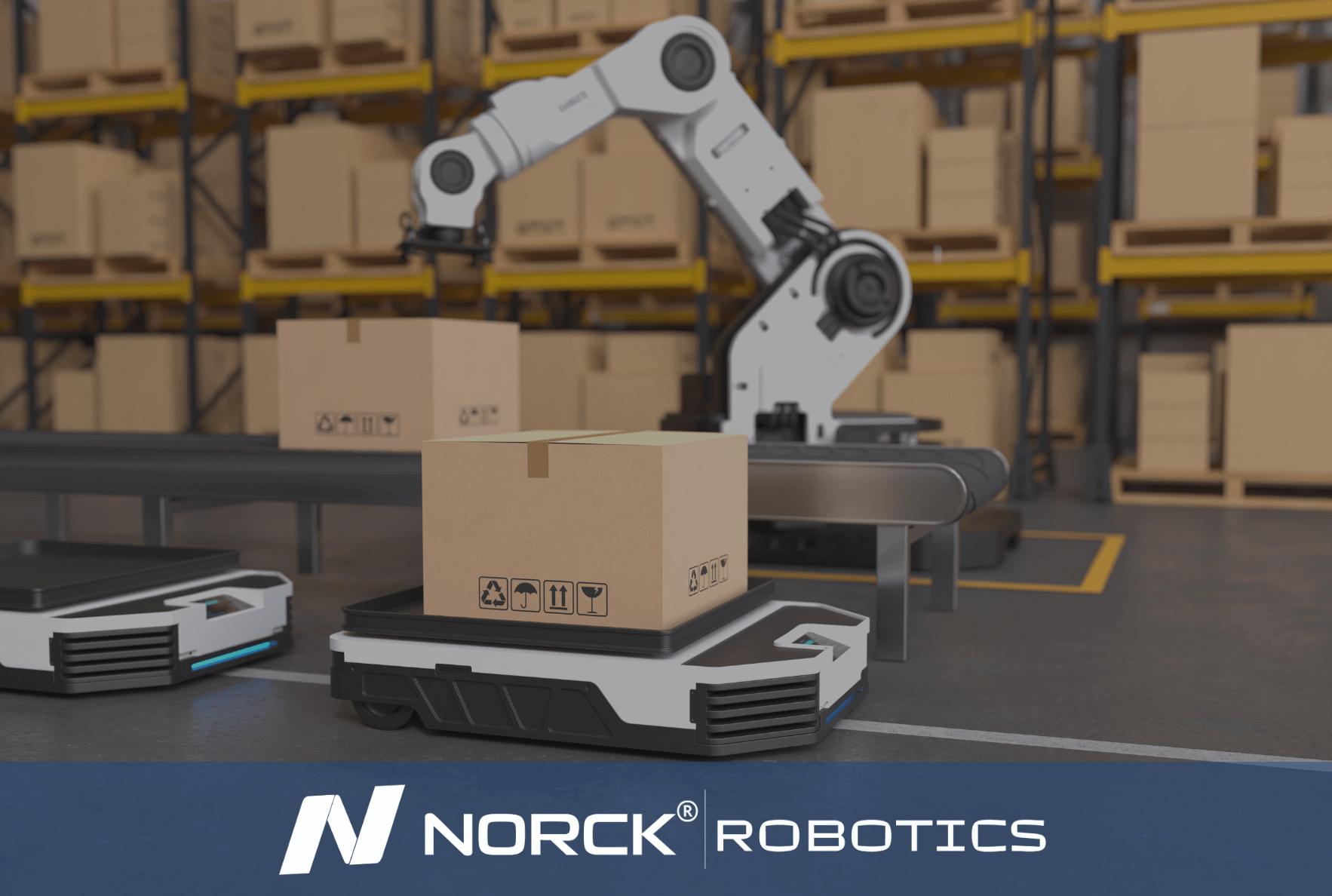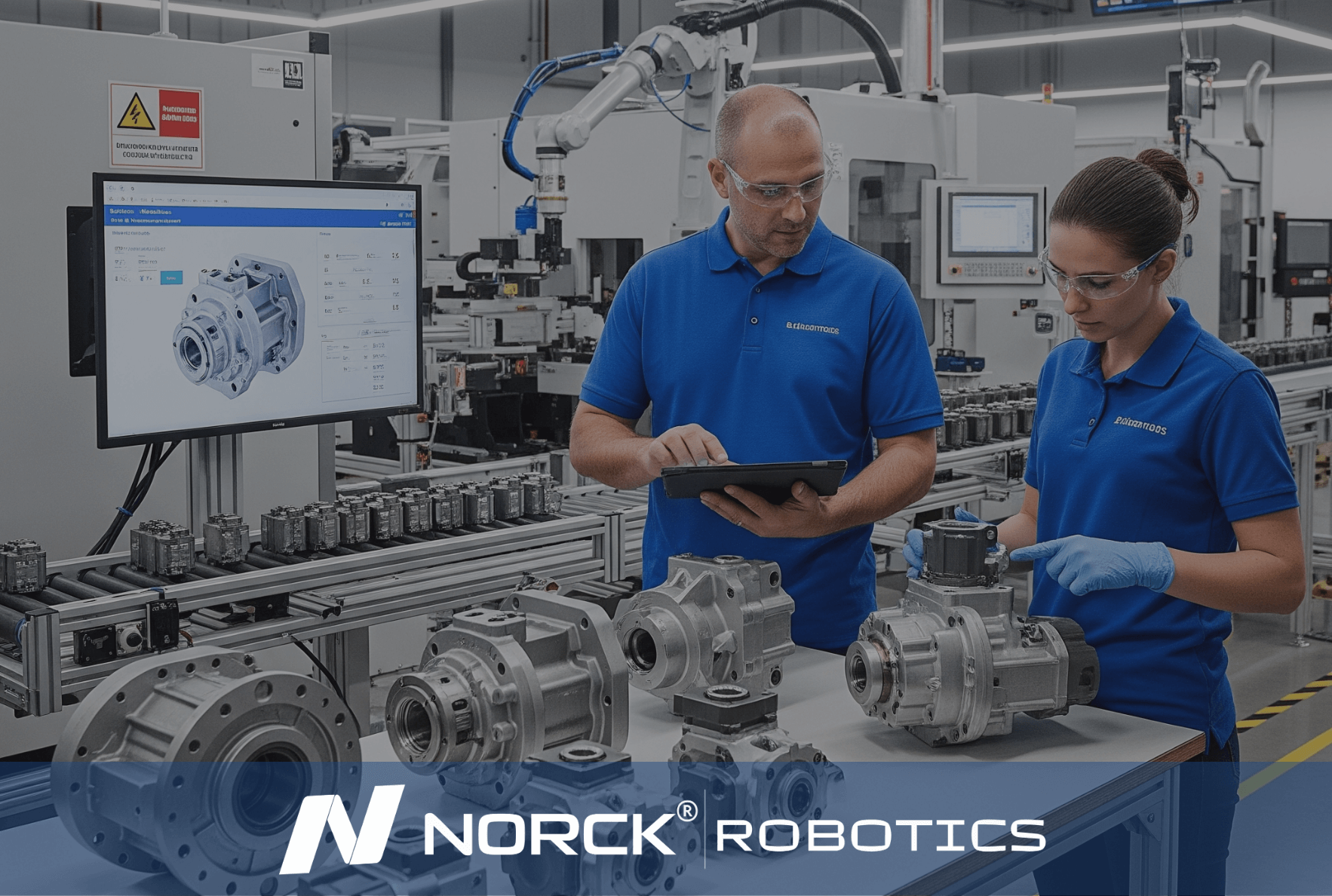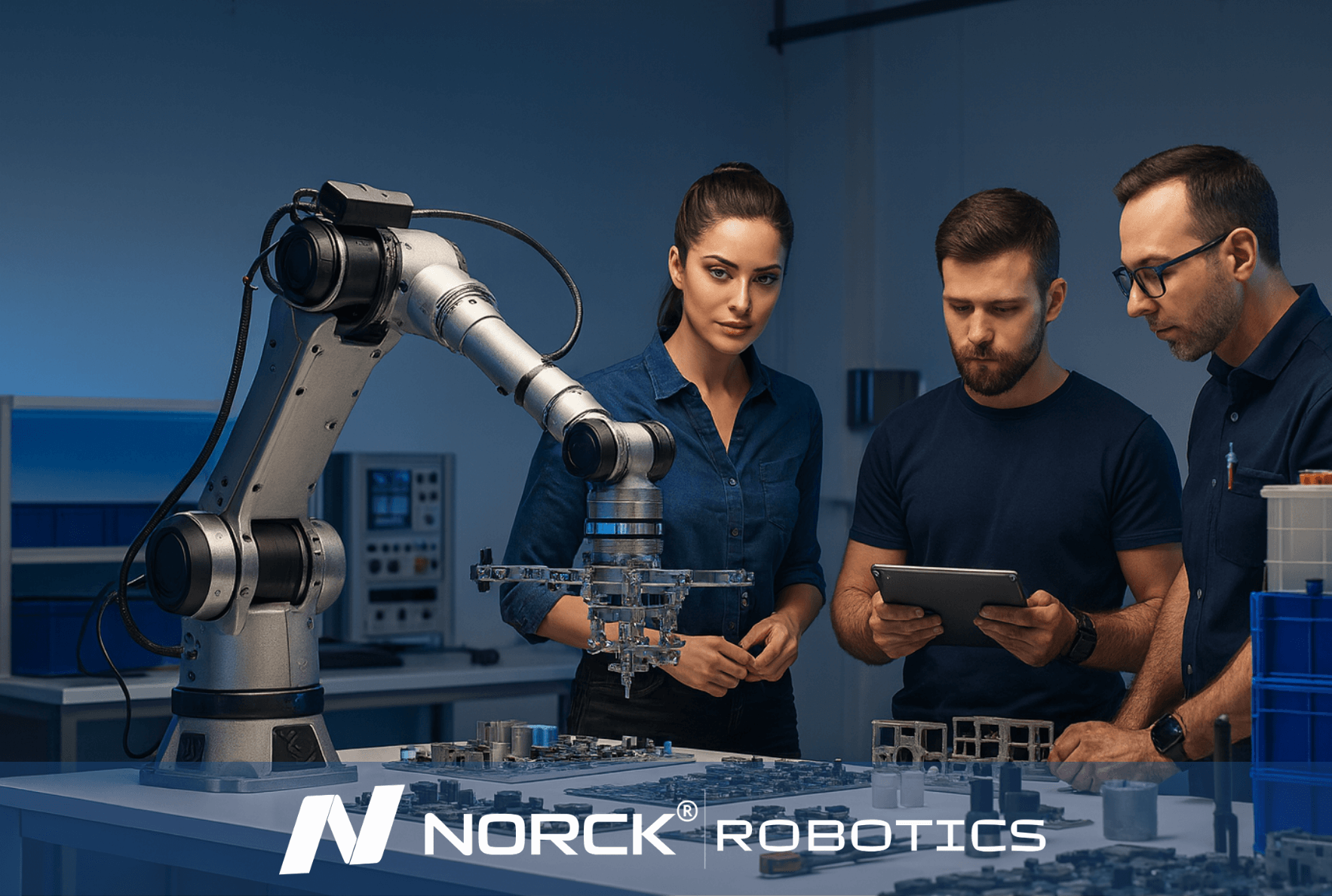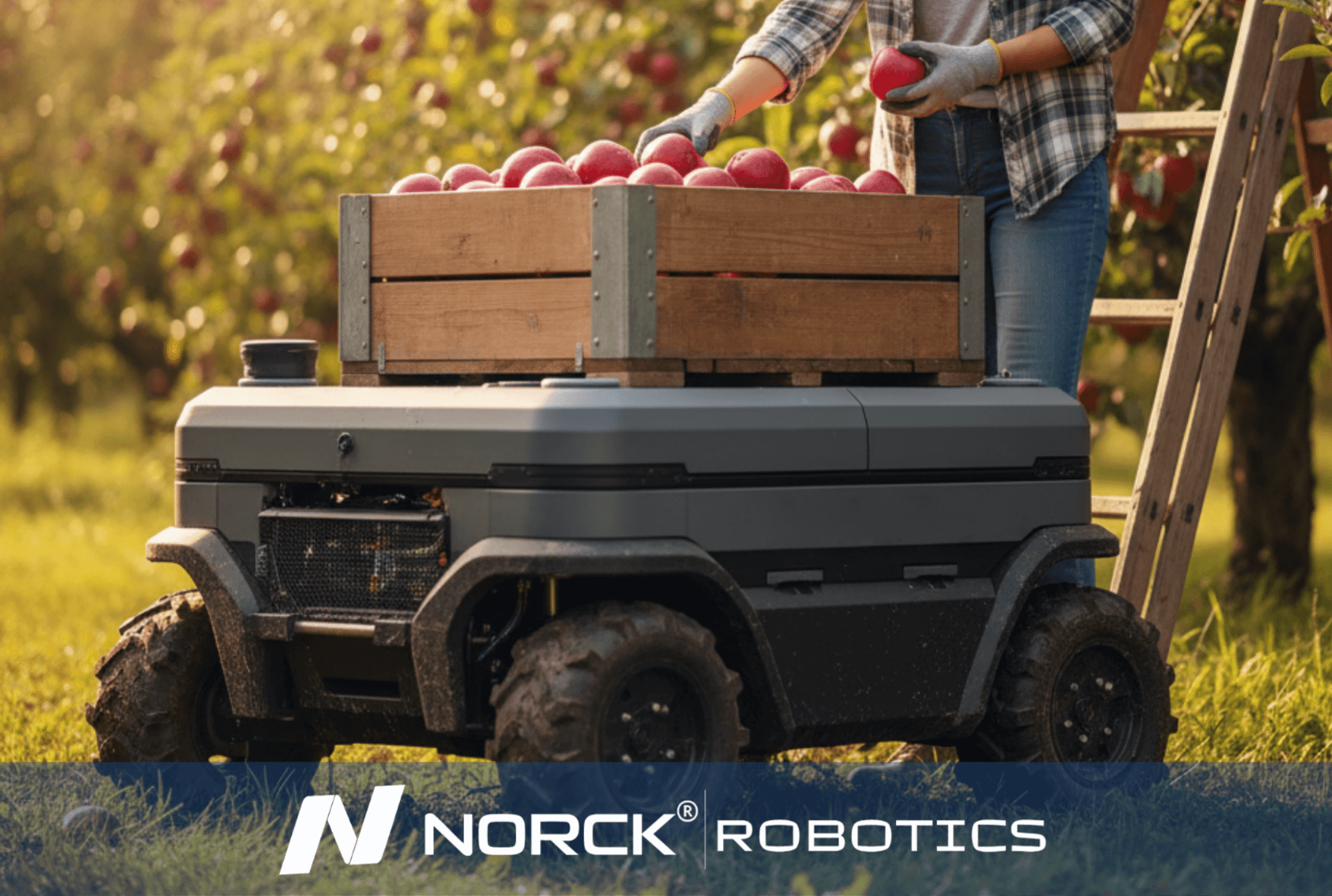.png)

Detail: Small-sized linear actuators (often 12V/24V DC, potentially using lead screws, belt drives, or voice coils) providing precise linear motion. Essential for automated pipetting systems, sample tray positioning, focusing mechanisms in microscopes or scanners, and moving sensor heads. Precision and smooth motion are key requirements.
Ready to automate your future? Get a quote from Norck Robotics now!

Norck Robotics specializes in providing unique robotic automation and engineering solutions designed to meet the specific operational needs of each client. Our expertise covers a wide range of industries and applications.

Norck Robotics delivers turnkey robotic automation and engineering solutions tailored to your specific needs across various industries.

Whether you need a single robotic cell prototype or full-scale factory automation, Norck Robotics engineers are ready to collaborate with you to bring your concept to life.

Norck Robotics engineers analyze your existing processes to provide feedback that enhances efficiency, cost-effectiveness, and productivity for robotic integration.
In laboratory use, compact linear actuators are used to automate small repetitive motion tasks with speed, accuracy, repeatability and low error margins. Typically, we need better throughput without sacrificing precision across a range of different tasks.
Here are a few examples of tasks in a lab using compact linear motion:
Linear actuators create the vertical and lateral travel to accurately aspirate and dispense small volumes in a laboratory environment.
Actuators provide movement of the trays containing samples to get them into, or out of, scanners, dispensers, or analyzers with repeatable positions.
Create smooth micro-adjustments to allow for the same section / area of the sample to create the same sharp, focused imaging of a specimen.
Products can be scanned, or detected, by providing controlled and repeatable movements of the sensor head across the sample.
Compact actuators can provide the accurate movement of large glass slides to maintain consistent transfer, during a diagnostic workflow, between workstations supplied with different resources.
In laboratory automation applications, compact linear actuators use a variety of motion technologies, and the appropriate technology will be chosen according to speed, force, precision, and space limitations:
Voice coil actuators are an ultra-smooth direct drive motion, where there is no mechanical contact between moving parts, and therefore give about the highest level of precision tolerance to the application. The types of applications suited for voice coil actuators include: extremely precise applications like a fine focusing mechanism in a microscope, or moving a sensor head with the fastest response and smallest amount of backlash.
Lead screw drives are systems based on the coupling of a rotating screw into linear motion, due to this simple rotating mechanism; lead screw drives are often used for high precision load carrying activities such as pipetting or positioning specimen trays(lead screw drives are mechanically simple and accurate) at low speeds.
Belt drives are systems that use timing belts and pulleys to create smooth linear travel at high speeds at distances longer than that attained from other systems. Common in fast tray or stage movement where speed is critical and vibration should be minimized.
There are several motion technologies used to ensure the compact linear actuators in laboratory automation systems meet and exceed laboratory demands for precision, quietness, and long-term reliability.

In addition to its own expert engineering team, Norck Robotics provides access to a network of hundreds of top-tier system integrators, robot manufacturers, and component suppliers across the United States, Germany, and Europe.

Working with Norck Robotics reduces dependency on manual labor, increases production consistency, and secures your operations against unforeseen disruptions, quality issues, and fluctuations. This enhances your company's supply chain resilience.

Norck Robotics advances digital automation by developing custom-designed robot grippers, advanced vision systems, and innovative simulation software. With an AI-driven, data-centric approach, it enables smarter system design, optimal performance, and predictive maintenance solutions.

Norck Robotics encourages its partners to be carbon-neutral by reducing energy consumption and material waste through the efficiency of robotic automation, and prioritizes environmentally conscious suppliers.
Typically, compact linear actuators used in laboratory automation are used at voltages for low-voltage operation modes to maintain proper usage in vulnerable low-voltage applications. The voltage levels most commonly seen in lab automation are:
These voltage levels are common for lab-grade power supplies and offer very efficient modes with restricted risk to sensitive biological or electronics systems. This directly contributes to repeatable and reliable motions while mitigating noise and electromagnetic disturbance.